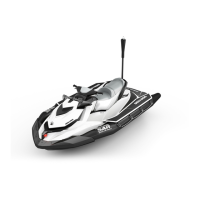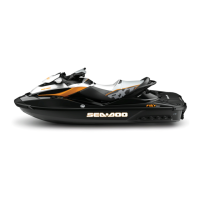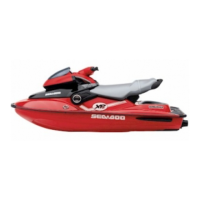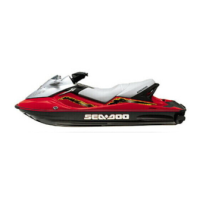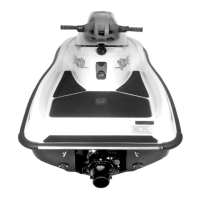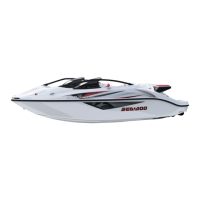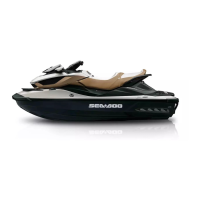OPERATING INSTRUCTIONS
When the nozzle is positioned in an
upward angle, the water thrust directs
the bow of the watercraft upward.
This position is used to optimize high
speed.
NOTE: VTS position is indicated on a
bar gauge in the information center.
2
3
4
1
smo2008-001-022_a
TYPICAL
1. Push on arrow pointing upward on VTS
button
2. Bow up
3. Nozzle up
4. VTS position
When the nozzle is directed down-
ward, the bow is forced downward
and enhances the watercraft turning
capabilities. As with any watercraft,
speed and operator body position and
movement (body English), will deter-
mine the degree and sharpness of the
watercraft turn. Porpoising can be re-
duced or eliminated if the nozzle is
downward and speed is adjusted pro-
portionately.
NOTE: VTS position is indicated on a
bar gauge in the information center.
2
3
4
1
smo2008-001-022_b
TYPICAL
1. Push on arrow pointing downward on VTS
button
2. Bow down
3. Nozzle down
4. VTS position
General
Recommendations
Rough Water or Poor Visibility
Operation
Avoid operation in these conditions. If
youmustdoso,proceedwithcaution
and prudence using minimum speed.
Crossing Waves
Reduce speed.
Always be prepared to steer and main-
tain your balance as necessary.
When crossing wakes, always keep a
safe distance from watercraft ahead.
WARNING
When crossing wakes, slow down.
Operator and passenger(s) should
brace themselves and adopt a
semi-standing position to help
absorb the bumps. Do not jump
waves or wakes.
Stopping/Docking
When the throttle is released, the wa-
tercraft is slowed by water drag. The
stopping distance will vary depending
on the watercraft size, weight, speed,
water surface condition, presence and
direction of wind and current.
56
______________
